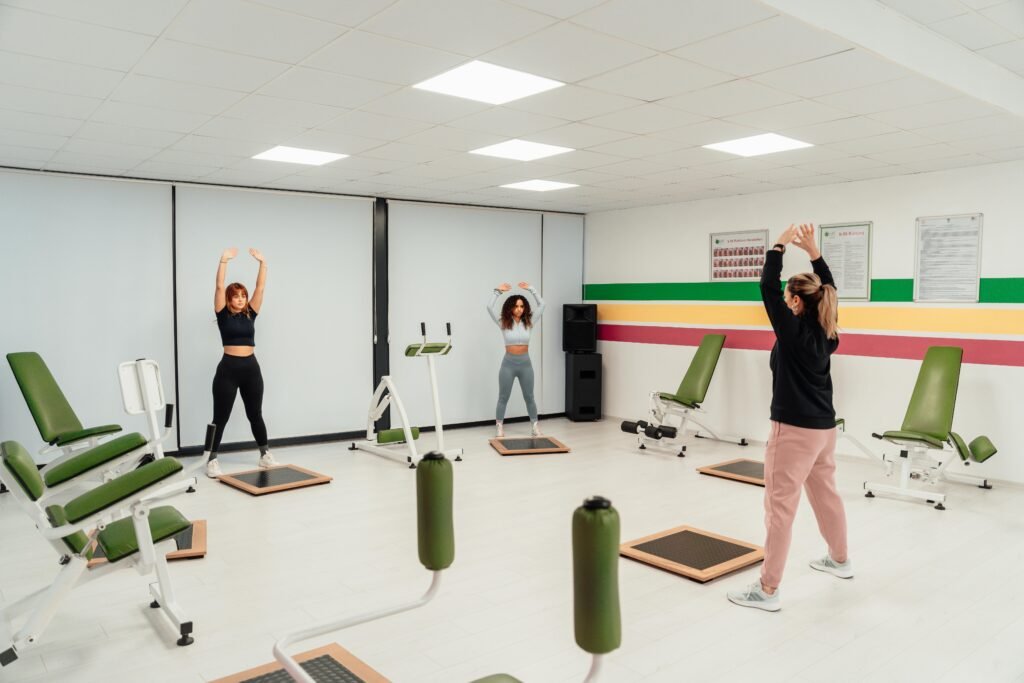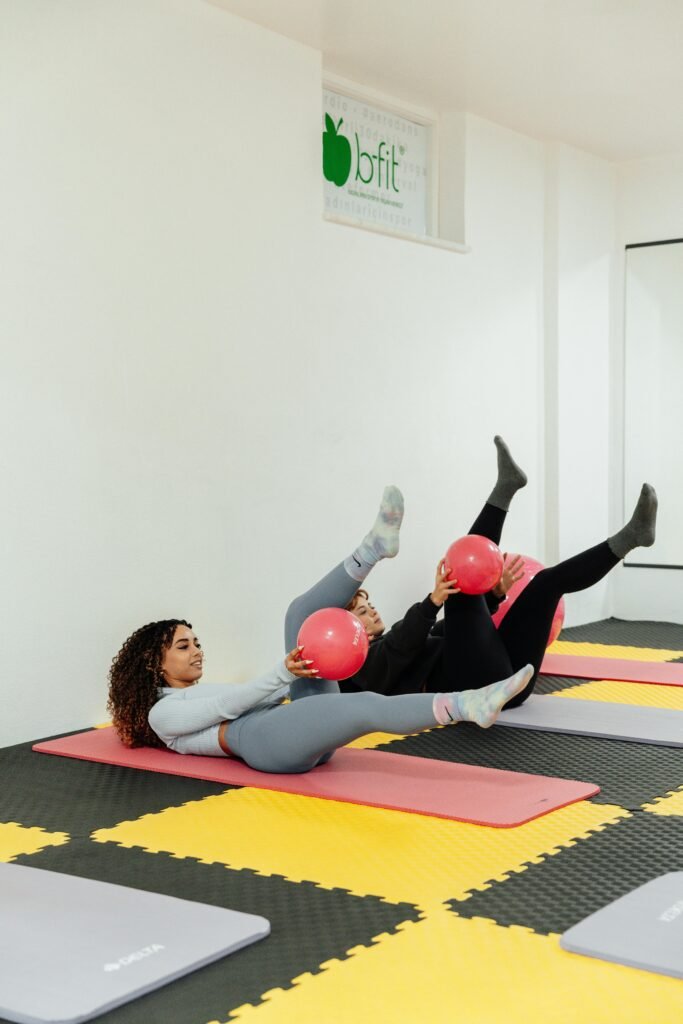
When I first stumbled upon the invigorating world of cardio exercise, I was simply looking for an effective way to shed some pounds. Little did I know that this journey would lead me to uncover a treasure trove of benefits that extended far beyond just weight loss. Cardio exercise has the power to transform not only our bodies but also our lives. In this guide, I’ll share ten unique ways cardio exercise can boost your health, along with relatable anecdotes and essential tips to integrate into your routine.
Energizing Your Heart: The Core Benefits of Cardio Exercise
Cardio exercise is not just about sweating it out at the gym or pounding the pavement. It’s about strengthening your heart and improving your health. When we engage in activities like running, cycling, or swimming, our heart rate increases. This elevating effect on our heart rate is crucial for overall heart health. But how exactly does cardio strengthen the heart muscle?
How Cardio Strengthens the Heart Muscle
When we participate in cardio workouts, our heart muscle works harder. This means it pumps blood more efficiently. Imagine your heart as a tire pump; the more you use it, the stronger it becomes. Over time, regular cardio can enhance the heart’s ability to pump blood, ensuring that oxygen-rich blood reaches every corner of your body. The more you exercise, the stronger your heart grows.
Isn’t it fascinating that something as simple as a brisk walk can help fortify something as vital as your heart? This simple adaptation boosts cardiac output and improves the heart’s overall efficiency.
The Role of Heart Rate in Cardiovascular Health
Your heart rate is a direct indicator of your cardiovascular health. A lower resting heart rate signifies a stronger heart. How can we measure this? Monitor your heart rate during exercise. As you become fitter, your heart rate will naturally lower during rest and recovery. In simple terms, your heart learns to do more work with less effort.
- Find a cardio activity you love.
- Gradually increase the duration and intensity.
Link Between Cardio and Overall Endurance
Engaging in regular cardio also builds endurance. This means you can do more without feeling completely wiped out. Want to chase after your kids or take the stairs without getting winded? Cardio can help! Imagine preparing for a long day; we need stamina, and cardio provides that boost.
It’s not just about the physical exertion. This type of exercise can help your body become more efficient, optimizing oxygen usage throughout your system. In other words, the more you exercise, the better connected your body becomes.
Interesting Fact
Did you know that regular cardio can reduce the risk of heart disease significantly? It’s true! Incorporating even moderate-intensity cardio into your routine can lead to noticeable benefits.
“The best way to keep your heart healthy is through regular exercise, especially cardio.” – Health Expert
So, as we engage in cardio, let’s remember how vital it is for our heart and overall well-being!
Mood Booster: The Psychological Benefits of Cardio
Did you ever hear of the “runner’s high”? It’s a euphoric feeling that many experience after a good cardio session. But why does this happen? Well, it’s all about endorphins, which are natural chemicals that boost your mood.
The Power of Endorphins
When we engage in cardio activities, like running or cycling, our bodies release these mood-lifting endorphins. This is why many find themselves smiling or feeling a rush of happiness after a workout. It’s almost like nature’s own dose of happiness. Isn’t that fascinating?
Studies have shown that just 20 minutes of cardio can significantly improve your mood. Think about it: a quick jog or a dance class could be all you need to fend off the blues. It’s a simple way to uplift your spirit without relying solely on medications. As a Mental Health Advocate put it,
“Exercise is a natural antidepressant; cardio, in particular, releases potent mood-lifting endorphins.”
Cardio’s Impact on Anxiety and Depression
Cardio workouts do more than just elevate your mood temporarily. They can also help reduce symptoms of anxiety and depression. Engaging in regular aerobic exercise creates a routine that can make you feel more stable. Some researchers even suggest that cardio can be as effective as therapy for some people. Now, that’s something worth considering!
When practicing cardio, I often find that I’m not just exercising my body but also tending to my mind. The repetitive motion and rhythm can be meditative. It provides a sense of escape, helping to clear away the mental clutter. Does exercise help you feel more focused? I know it does for me.
The Social Aspect of Group Cardio Workouts
Let’s not overlook the enjoyable social aspect of cardio. Participating in group workouts can foster new friendships and community bonds. Whether you join a local running club or a cycling class, you create connections. It’s motivating to sweat alongside others who share similar goals.
Engaging in group workouts can also provide accountability. Have you ever found it easier to stick to your plans when someone else is counting on you? I certainly have! Plus, it turns workouts into a fun social activity, not just exercise.
So, embracing cardio not only benefits our bodies. It uplifts our spirits too. It offers natural ways to combat stress and anxiety. Why not lace up those shoes and hit the pavement? Your body and mind will thank you!
3. Building Strength: Cardio’s Role in Muscle Growth

When we think about cardio, we often picture treadmills, running, or cycling. Many of us believe these activities are solely for burning calories. But what if I told you that cardio also plays an essential role in muscle growth? Yes, you heard it right!
How Steady-State Cardio Can Aid Muscle Recovery
Steady-state cardio, which involves maintaining a consistent effort level over a period, is fantastic for recovery. Think of it as a gentle lullaby for your muscles after a hard strength training session. It increases blood flow and delivers vital nutrients to tired muscles, promoting faster recovery. This means that the next time you hit the weight room, you will feel fresher and more prepared.
Benefits of Steady-State Cardio:
- Improved circulation: Better blood flow helps muscles repair.
- Reduced soreness: Gentle movement can alleviate post-workout pain.
- Enhanced endurance: You’ll notice you can lift more or perform longer.
Incorporating Strength Training with Cardio for Optimal Results
Now, let’s discuss the best part: combining cardio with strength training. This fusion not only aids in muscle retention but also enhances your overall fitness level. Picture it like mixing peanut butter and jelly: both are great on their own, but together, they create something extraordinary.
I personally enjoy integrating circuits with cardio. For instance, I perform a circuit of squats and lunges, followed by a period of steady-state running. It’s a blend that builds strength and endurance simultaneously. This method not only keeps my workouts exciting but also yields significant results.
Debunking Myths: Cardio vs. Strength Training
Many people argue that cardio can sabotage strength gains, but that’s a myth. The truth is, together they can be a powerhouse combination. Let’s spotlight some common misconceptions:
- Myth 1: Cardio will make you lose muscle mass.
- Myth 2: You shouldn’t do cardio on strength training days.
- Myth 3: Cardio is only about burning calories.
In reality, “Cardio isn’t just about burning calories; it’s about building a resilient body.” – Fitness Coach. When paired well with strength training, cardio can actually help build a stronger, more resilient body.
Many believe that cardio is all about stamina. But it’s more than just that! It has profound implications for muscle health when combined with strength training. Think of them as teammates working towards a common goal: your fitness.
4. Longevity and Heart Health: Cardio for a Longer Life
Have you ever wondered how some people seem to age gracefully, full of energy and life? One secret might be as simple as integrating cardio into their daily routine. Research indicates that those who regularly engage in cardio activities tend to live longer, healthier lives. This isn’t just about living longer; it’s about enhancing the quality of those years.
Link between Regular Cardio and Increased Lifespan
Regular cardiovascular exercise can lead to significant health benefits. It doesn’t only strengthen your heart; it also lowers the risk of several ailments associated with aging, such as heart disease and diabetes.
- It improves blood circulation.
- It reduces levels of harmful cholesterol.
- It boosts your immune system.
One truly inspiring moment for me was meeting a 70-year-old marathon runner. Can you believe it? She was not just running; she was thriving. She told me, “I run not to win but to live.” This remarkable woman perfectly embodies the idea that cardio can add life to our years.
5 Must-Know Benefits of Cardio Related to Aging
So, what specific benefits does regular cardio provide as we age? Here are five essential ones:
- Enhanced Mood: Cardio can release endorphins, which boost your mood and alleviate stress.
- Weight Management: Maintaining healthy weight is crucial as metabolism slows down with age.
- Improved Cognition: Exercise increases blood flow to the brain, enhancing memory and learning.
- Better Sleep: Regular cardio helps in falling asleep faster and getting deeper sleep.
- Increased Longevity: Engaging in regular exercise is linked to a longer and fuller life.
Each of these benefits can contribute to a more vibrant lifestyle as we age.
How to Create a Sustainable Long-Term Cardio Plan
Getting started with cardio doesn’t have to be overwhelming. Here are a few tips to create a sustainable plan:
- Start Slow: If you’re new to exercise, begin with short sessions and gradually increase your duration.
- Set Realistic Goals: Aim for at least 150 minutes of moderate activity per week.
- Mix It Up: Include various activities like walking, cycling, swimming, or dancing to keep things exciting.
- Stay Motivated: Find a workout buddy or join a class. It’s much more fun to have company!
- Listen to Your Body: It’s essential to rest when needed and avoid overexertion.
“To add years to your life, you must add life to your years, and cardio helps with both.” – Lifespan Researcher
Integrating cardio into your daily routine can lead to a longer, healthier life, buoying your chances for a vibrant future. Let’s embrace the journey towards better health together!
5. FAQs About Cardio Exercise: Clearing Your Doubts
Cardio exercise plays a vital role in fitness, but it’s easy to have questions about it. This section aims to clarify some of the most frequently asked questions about cardio. Addressing these queries can make your cardio routine more effective and enjoyable.
1. What is the best type of cardio for beginners?
When you’re starting, the best type of cardio is what feels good to you. Walking, biking, or swimming are excellent options. They are low-impact and easy to integrate into your daily routine. Choosing an activity you enjoy ensures you’re more likely to stick with it. Think of it as finding a new hobby rather than a chore.
2. How often should I do cardio exercises?
Generally, experts recommend aiming for at least 150 minutes of moderate cardio or 75 minutes of vigorous cardio each week. Break it down into manageable sessions. For example, three 30-minute sessions can fit into a week easily. However, we should listen to our bodies and adjust accordingly.
3. Can I lose weight doing only cardio?
Yes, you can lose weight primarily through cardio. However, combining cardio with strength training can yield better results. Strength training builds muscle, which helps burn more calories at rest. It’s like having a furnace that runs even when you’re not working out. ✨
4. Are there risks to excessive cardio?
While cardio is beneficial, too much can lead to burnout or injuries. It’s crucial to find a balance. If you are constantly exhausted or feeling pain, it might be time to scale back. Moderation is key. Remember, more isn’t always better.
5. What should I eat before and after cardio workouts?
Before your workout, opt for a light snack rich in carbohydrates – something like a banana or a slice of toast. Afterwards, a meal with a healthy mix of protein and carbs is essential for recovery. Think of it as fueling your body both before and after a race. Staying hydrated is just as important.
Engaging in these Q&As is not just informative; it lays the foundation for a successful and sustainable fitness journey. A well-informed approach can enhance your commitment and understanding towards embracing cardio into your lifestyle.
| Question | Answer |
|---|---|
| What is the best type of cardio for beginners? | Low-impact activities like walking, biking, or swimming. |
| How often should I do cardio exercises? | 150 minutes of moderate or 75 minutes of vigorous exercise weekly. |
| Can I lose weight doing only cardio? | Yes, but combining it with strength training is more effective. |
| Are there risks to excessive cardio? | Yes, it can lead to burnout or injuries. |
| What should I eat before and after cardio workouts? | Carbohydrate-rich snack before; protein and carbs after. |
In conclusion, facing doubts about cardio exercise is common. By answering these questions, we help demystify cardio and its benefits. Remember, a little knowledge goes a long way. If you ever feel uncertain, just think back to these points. We can always turn to credible resources for further reading, and we encourage you to stay informed as you embark on your fitness journey.
TL;DR: Cardio exercise offers an array of health benefits beyond weight loss, including improved heart health, better mood, stronger muscles, and enhanced longevity. Dive into this article to explore ten inspiring ways to elevate your fitness journey!


